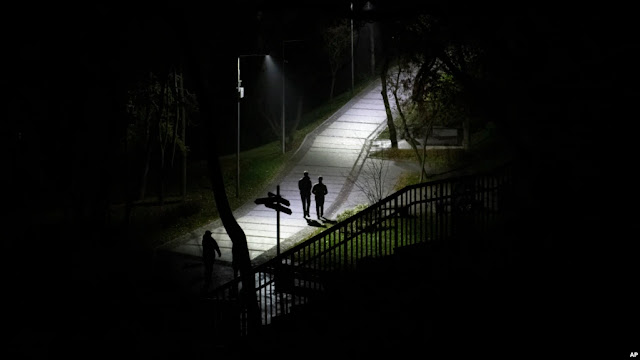11/21/2022
11/19/2022
11/13/2022
Lionel Messi's quotes
Pick up your favorite quote and the one you like the least. Get ready to account for your choices
Are his words correctly quoted? Can you spot any mistakes?
You can also watch the video by clicking on the Play Button
11/12/2022
11/06/2022
Villa 31 - an Argentine shanty town

Provide a synonym for the highlighted words. You may want to use some of the following suggestions
|
Additionally Although Anyway As a result of Besides Due to Even though |
However Moreover On the other hand Though Whereas While Yet |
Four-fifths of Latin Americans live in cities. But almost every big city is encircled by slums, which house 120m people, or 20% of the region’s population. They go by different names: villa (short for villa miseria) in Argentina, favela in Brazil and barrio bajo in Mexico. Governments have long tried to improve them.
A visitor walking down
Arroyo, a street in Retiro, one of the most exclusive areas in Buenos Aires, Argentina, can buy a bag of coffee beans for $22 and order a kale pesto salad at a hip
restaurant. But a
few streets away is the city’s oldest slum, known as Villa 31. It has a surface
of 72 hectares and is home to over 40,000 people. A three-bedroom apartment on
Arroyo will rent for around $3,000 a month but, in contrast, a
family in Villa 31 might pay $150-250 for their lodging.
Villa 31 is
gradually improving. Since 2016 the city government, with funds from the World
Bank and the Inter-American Development Bank (IDB), has spent more than $300m
on paved roads, sewage pipes and electricity cables.
The slum had
only one asphalt road. But today, all
streets are paved. In 2016 there were no public schools. Now it has three.
Since 2019 buses go to Villa 31 and a bank has opened there. And it has reduced crime because of
an increased police presence.
The city
government built blocks of apartments to house 1,200 families that once lived
under a highway. But
in two recent surveys of the new apartments a majority of residents complained
of leaks and poor insulation. Higher rents are a source of concern.
Slum
integration is a rare point of consistency in Argentina’s fractured politics.
In 2009 a law promoted by Mauricio Macri, then a liberal mayor of Buenos Aires,
aimed to improve Villa 31’s infrastructure. In 2017, when Mr Macri was
president, upgrading shantytowns became a national priority. This has continued
under a government led by the Peronists, a leftist populist movement.
Buenos
Aires mayor, Mr Horacio Rodriguez Larreta, a Harvard-trained technocrat, is
hoping the publicity from Villa 31 can help him win the presidency next year.
Billboards across Buenos Aires push his slogan: “The transformation doesn’t
stop.”

Adapted from The Economist







